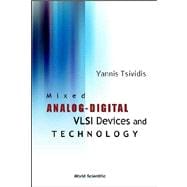You will learn about the many device-modeling requirements for analog work, as well as the pitfalls in models used today for computer simulators such as Spice. Also included is information on fabrication technologies developed specifically for mixed-signal VLSI chips, plus guidance on the layout of mixed analog-digital chips for a high degree of analog-device matching and minimum digital-to-analog interference.
Filled with practical information, this first-of-its-kind book will help you grasp the nuances of mixed-signal VLSI-device models and layout that are crucial to the design of high-performance chips.









